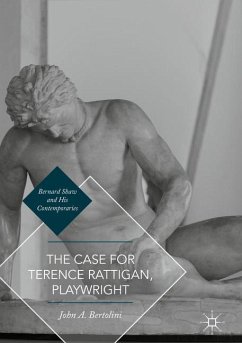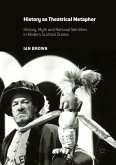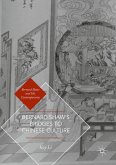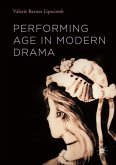This book asserts the extraordinary quality of mid-twentieth century playwright Terence Rattigan's dramatic art and its basis in his use of subtext, implication, and understatement. By discussing every play in chronological order, the book also articulates the trajectory of Rattigan's darkening vision of the human potential for happiness from his earlier comedies through his final plays in which death appears as a longed for peace. New here is the exploration through close analysis of Rattigan's style of writing dialogue and speeches, and how that style expresses Rattigan's sense of life. Likewise, the book newly examines how Rattigan draws on sources in Greek and Roman history, literature, and myth, as well as how he invites comparison with the work of other playwrights, especially Bernard Shaw and Shakespeare. It will appeal broadly to college and university students studying dramatic literature, but also and especially to actors and directors, and the play-going, play-reading public.
"It is an insightful analysis of Rattigan's work, showing the real emotional complexity and intensity of the plays beneath exchanges that might seem at first glance linguistically unmemorable. ... Bertolini is very good at teasing out the emotional transactions that transform these seemingly banal moments into profound pieces of theatrical anthropology, scrutinizing the rituals of our tribe. The comprehensiveness of the book pays particular dividends when he comes to some of the lesser-known plays." (Dan Rebellato, Modern Drama, Vol. 61 (03), Fall, 2018)
"The Case for Terence Rattigan: Playwright is an early volume in a new series, Bernard Shaw and His Contemporaries, published by Palgrave Macmillan for a largely academic and global readership. ... There could hardly be a more timely and eloquent study of Rattigan as a literary (and dramatic) artists than John A. Bertolini's The Case for Terence Rattigan, Playwright and we may hope that the Palgrave book is widely readby academics and taught to new generations of students." (Holly Hill, The Rattigan, Issue 21, July, 2017)
"There is much illuminating textual analysis here - of career-spanning dramatic techniques (the use of letters, the silent reappearance of characters), for instance, and the development of two classic Rattigan set-ups: father-son conflict, and a woman's love for a younger man. Bertolini is precise in unpicking Rattigan's verbal strategies, such as the use of qualifiers, as well as how his characters echo one another's statements, and in doing so reveal new, painful meanings. This is especially perceptive and detailed." (Holly Williams, TLS The Times Literary Supplement, the-tls.co.uk, March, 2017)
"With his lucid, nuanced analyses, Bertolini reveals and explains Rattigan's artistry. This thoughtful book serves both as a study of the playwright and as a manual on reading and understanding drama-useful to students, actors, and directors alike." (Sally Peters, SHAW The Journal of Bernard Shaw Studies, Vol. 37 (2), 2017)
"The Case for Terence Rattigan: Playwright is an early volume in a new series, Bernard Shaw and His Contemporaries, published by Palgrave Macmillan for a largely academic and global readership. ... There could hardly be a more timely and eloquent study of Rattigan as a literary (and dramatic) artists than John A. Bertolini's The Case for Terence Rattigan, Playwright and we may hope that the Palgrave book is widely readby academics and taught to new generations of students." (Holly Hill, The Rattigan, Issue 21, July, 2017)
"There is much illuminating textual analysis here - of career-spanning dramatic techniques (the use of letters, the silent reappearance of characters), for instance, and the development of two classic Rattigan set-ups: father-son conflict, and a woman's love for a younger man. Bertolini is precise in unpicking Rattigan's verbal strategies, such as the use of qualifiers, as well as how his characters echo one another's statements, and in doing so reveal new, painful meanings. This is especially perceptive and detailed." (Holly Williams, TLS The Times Literary Supplement, the-tls.co.uk, March, 2017)
"With his lucid, nuanced analyses, Bertolini reveals and explains Rattigan's artistry. This thoughtful book serves both as a study of the playwright and as a manual on reading and understanding drama-useful to students, actors, and directors alike." (Sally Peters, SHAW The Journal of Bernard Shaw Studies, Vol. 37 (2), 2017)








